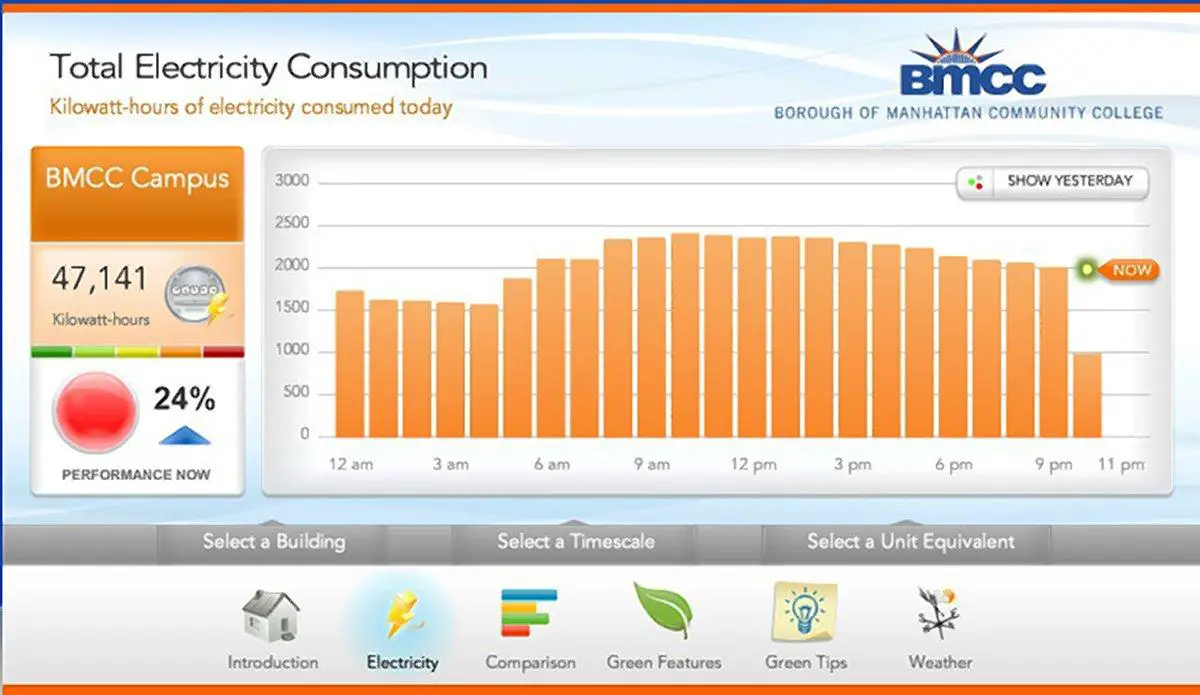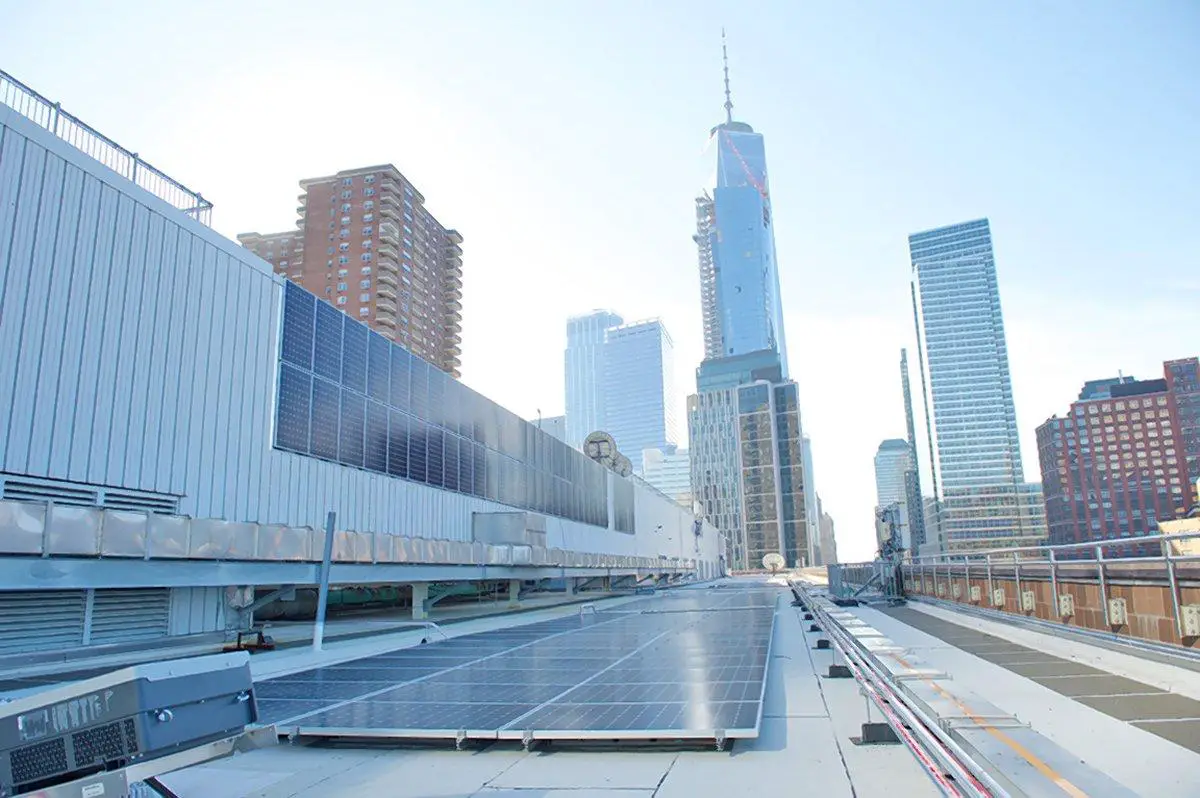By installing 947 solar panels on their roof, the Borough of Manhattan Community College (BMCC), one of seven two-year colleges within the City of New York (CUNY) system, recently became the largest solar project in Manhattan.
Scott Anderson, the vice president for administration and planning at BMCC, made a statement about the project, claiming it would save the institution approximately 600,000 gallons of gasoline a year. The project is one of the ways that the CUNY system has attempted to become more sustainable.
Even though the Manhattan community college has the largest solar panels at the moment, high-rise building the Stuyvesant Town complex plans on having 22 acres of rooftop for their panels, which would exceed BMCC’s current measurements. Still, Anderson said, the school will get a lot of credit for being such a bright example of environmental-mindedness.
The project was made in collaboration with the New York Power Authority. Along with it, the Borough of Manhattan Community College has installed an energy dashboard that will allow students, faculty and staff track the progress of energy saving.

According to the New York Daily News, the school’s emphasis on sustainability is apparent in more than just the solar panels, as the community college offers a bevy of other environmentally friendly options. The Manhattan community college offers recycled and/or bleach-free products in all their bathrooms, and their roofs have green zones for planting vegetation, which provides rainwater and reduces insulation costs.
The Borough of Manhattan Community College is not the first college that has invested in solar panels. Universities such as Drexel and Northwestern, for example, have worked to create sustainable environments whose efficiency also benefits the students and administration on campus. Drexel has committed itself to having 100 percent wind and solar power, incentivizes recycling and has joined forces with local businesses to provide fresh produce in the dining halls.
As a student at NYU, I can say that my university trails the Borough of Manhattan Community College and Drexel in its sustainability efforts, but the administration is working to match them. Clubs directly tied to sustainability, such as ECOReps and DiVest, promote energy sustainability not only through programming for students, but to other organizations and management in the institution.
A few weeks ago, members of the ECOReps who live in residence halls promoted installing the NYUGReen app, which allows people to record or log themselves acting with sustainable interests, whether that’s bringing reusable silverware, using the best solar yard lights, using local transportation or even taking the stairs to other floors in the dorm.
Using the app, the residence halls hosted a friendly competition to see who could log as many sustainable activities as possible, with the reward being an ice cream truck for the whole day. Using the app allowed students to see the impact of their actions on water and carbon dioxide consumption.
Even though the Borough of Manhattan Community College is not the first college to install solar panels for its student body, supporters hope that other universities in New York will soon follow suit.

















